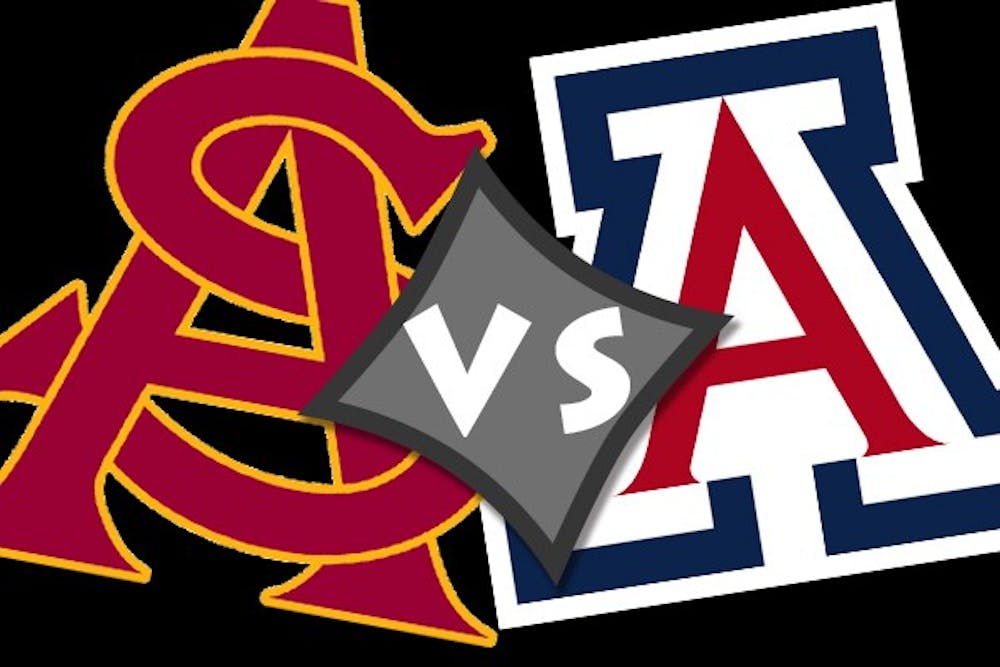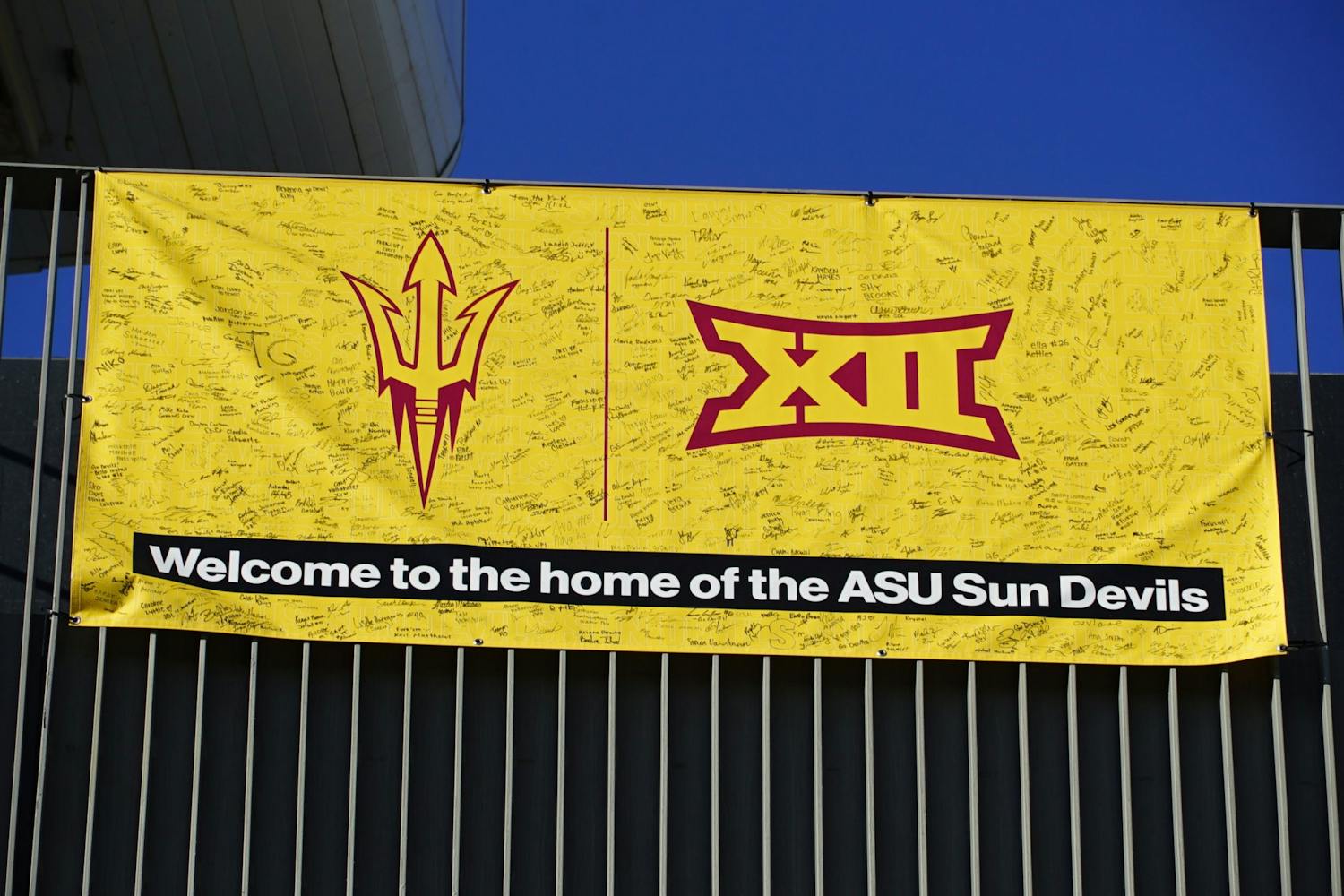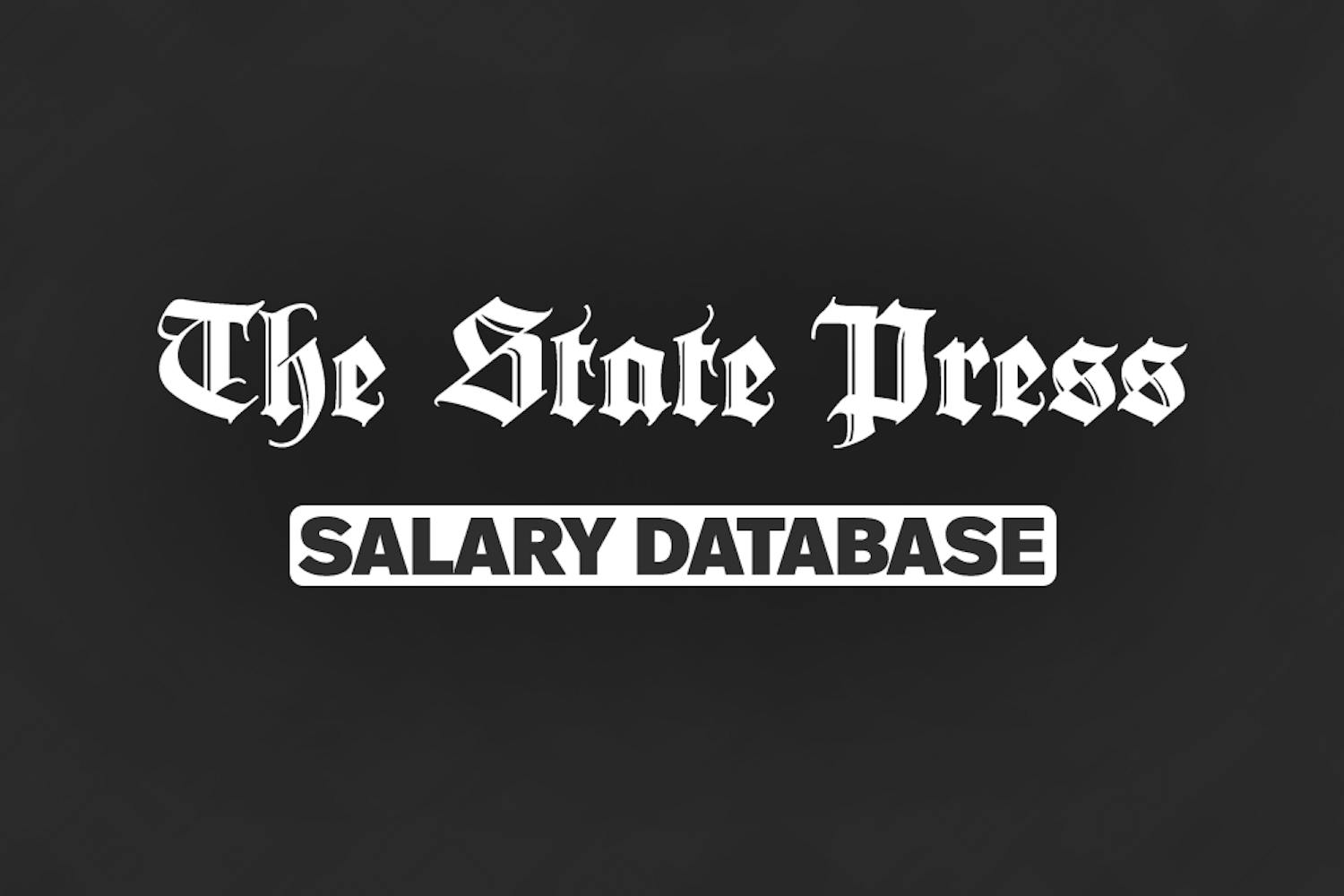A new list of the most innovative colleges may fan the flames of the rivalry between ASU and UA.
Although ASU was No. 1 on the U.S. News and World Report’s list of most innovative Universities, it didn’t even make a list published by news organization Reuters — however, UA came in at 63 on the Reuters list.
The Reuters methodology uses quantitative data to rank universities from across the world, looking at criteria including patents filed, patents granted and commercial impact.
However, to understand how Reuters came to their rankings, it is important to understand the rather arcane development processes for new technology at each university.
Funding
Documents provided by ASU's Arizona Technology Enterprises and UA's Tech Launch Arizona show that UA received nearly $1 million more in funding for research than ASU. Funding is mostly grant money from governmental organizations like the National Science Foundation, National Institutes of Health, NASA, National Institute of Statistical Sciences and more, according to the two universities. The difference in funding could explain the fact that UA filed more patents and had more patents approved — a key metric in the Reuters ranking.
However, it should be noted that despite the lower amount of funding, ASU had a higher overall percentage of accepted patents approved.
Invention Disclosures
Before patenting a product or initiating a research-based startup, researchers must fill out an invention disclosure form that outlines the worthiness and uniqueness of the product. This form is required to be filled out for any research receiving federal funding.
The process begins when faculty find an application for their research that can be refined and marketed. Then they reach out to their respective technology transfer program, which helps the researchers embark on the rest of the development process.
ASU completed around 270 invention disclosures in FY 2016, while UA completed around 250.
After this, the tech transfer organizations decide whether or not the product is worthy of submitting for patent approval.
David Allen, UA's Tech Launch Arizona vice president, said the decision process could take days or months to complete as tech transfer workers explore the market to see if the product is novel. After this, they submit a patent request.
Patents
Following a successful invention disclosure, the patenting process begins.
Allen said that the range of patents is as wide as the research at UA.
“That is what is interesting about this,” Allen said. “It is all based on faculty research, so it could be something with microdiagnostics or a pathway to curing a disease. Whatever it is, we may have a way to patent it.”
According to documents provided by TLA, UA applied for 278 patents in FY 2016 and was granted 36, or around 13 percent.
About half of the patents involve the health and medical field, while the other half are in life sciences.
Although TLA had more overall accepted patents, Arizona Technology Enterprises (AzTE) had a higher percentage of accepted patents.
AZTe provides support for these same services at ASU. In FY 2016, AzTE applied for 159 patents, and had 60 approved, or 38 percent.
Charlie Lewis, AzTE senior vice president of venture development, said that ASU helps faculty from the formation of a disclosure to the patenting and commercialization of the product.
"Some of the services we provide for both student and faculty startups include: business strategy, business plan and executive summary formation, how to find investment capital, finding mentors and finding management for the company," Lewis said.
Lewis said that this is what technology transfer arms do at most universities, but what sets ASU apart is its direct work with Silicon Valley through entrepreneurship bootcamp Draper University.
"Draper has an entrepreneurial training program that is integrated with that at ASU to give the best in class experience for entrepreneurs," he said. "That's what differentiates us, nobody has those kinds of relationships with Silicon Valley to tap into the mind of accomplished entrepreneurs."
Commercialization
After the patent is accepted, the tech transfer programs help refine the idea and bring it to market.
Lewis said the commercialization process could happen in different ways.
“Once all of the necessary filing is done we commercialize that product in one of two ways,” he said. “We either license our invention to an existing company or a new start up is created.”
This process is used by both universities. SinfoníaRx, a medication therapy management company, for example, started at the UA. SinfoníaRx CEO Kevin P. Boesen said the research for his company began at UA in 2006.
“We spent seven years within the university developing and refining both the clinical components as well as the IT software,” Boesen said. “We also worked on business development.”
After researchers refined the product, Tech Launch Arizona worked with them in a number of ways.
“There was budgeting support to help us implement the program against some of the contracts that we had,” he said. “And there was business development support as far as providing business plans.”
They also helped by reaching out to Sinfonía HealthCare Corp to ultimately arrange for the acquisition of SinfoníaRx.
“They helped us find the outside partner to ultimately commercialize it with,” he said.
ASU helps researchers in a similar capacity with entrepreneurship initiatives, such as the Edson student entrepreneurship initiative.
One such University research-based startup is BeeSprout, a company that developed a technology to help consumers know when their fruit is ripe.
"So we started BeeSprout by formulating sets of hypotheses regarding ways we can use sensor technology to help people grow plants and who we can help," said Christopher Workman, a member of the startup.
He said ASU provided both research and business resources to the fledgling company and helped create what he said is a great product.
"Beyond prototype development ASU has also helped us build our business by directing us to mentors and partners for intellectual property, legal operation and social media marketing."
Note: Reuters looked at data between 2009-2014. This article references the most recent data available, with the same criteria.
Correction: Due to a reporting error, a previous version of this story incorrectly stated the amount of patents granted to UA and the role of Draper University. Those errors have been corrected.
Reach the reporter at isaac.windes@asu.edu or follow @isaacwindeschef on Twitter.
Like The State Press on Facebook and follow @statepress on Twitter.




